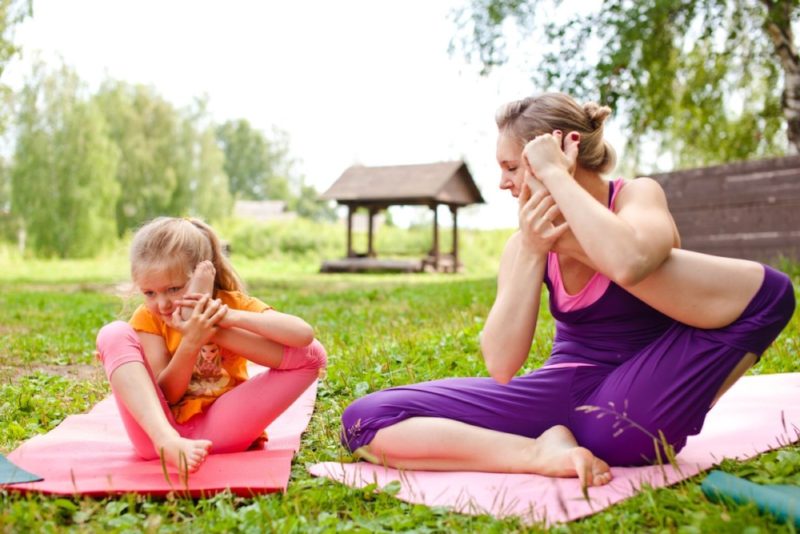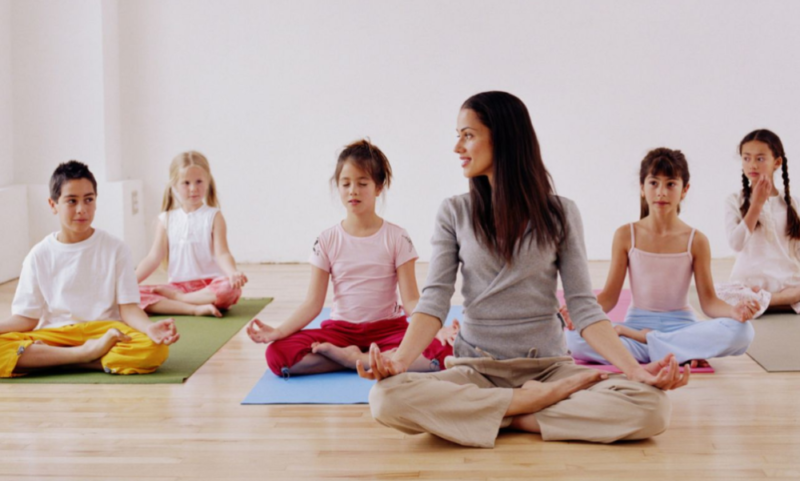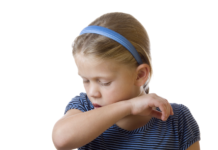If the child has excess energy, it is important to be able to direct it in the right direction. When creativity does not help to take the baby, yoga for children comes to the rescue. Such exercises will help develop flexibility, strengthen muscles and form a beautiful posture.
Material Content:
The benefits of yoga for the child's body
Yoga classes for children contribute to the harmonious physical and mental development of the child. Such training will be a great leisure activity for the youngest. The main difference from adult training is that classes are held in a playful way, so kids will not be bored. For each asana, an associative chain is built that is understandable to the child, so this direction perfectly develops the imagination.
In addition, yoga contributes to:
- strengthening the spine;
- posture correction;
- normalization of the work of internal organs;
- improving cognitive functions of the brain;
- increase immunity;
- muscle development.
At the same time, loads can be adjusted independently, so such exercises do not deplete the child’s body, unlike big-time sports.
Yoga for children is recommended for babies with kyphosis and scoliosis as a way to gently and delicately correct posture.
The benefit of children's yoga is to strengthen the body overall. After several months of regular classes, you can also notice an increase in school performance. This is due to improved cerebral circulation during the performance of some asanas. In addition, yoga improves metabolic processes and contributes to the saturation of cells and organs with oxygen, so the immune system strengthens and children get much less sick.
Improving concentration, strengthening the vestibular apparatus and improving coordination of movements - all this will give yoga for children. This direction also teaches the child to build harmonious relations with the outside world and from a young age instills a healthy lifestyle.
When and where to start classes
Having figured out what yoga is useful for the baby, parents should seriously talk with the child, and only after recording it in class. It is important to explain how training is going on and what goals they pursue. Young children are often afraid of everything new, so the further result will depend on the training provided by the parents - the child will either attend classes with pleasure or feel deeply miserable, not understanding why this is necessary.
If the first training session did not impress the child, parents can set an example by signing up for joint classes.
Another important nuance is the lack of contraindications. It is recommended that before the start of the lesson, a pediatrician examine and consult a doctor about the benefits of yoga for the child.
It is important to choose comfortable clothing that does not constrain movements. Moreover, it is advisable to consult with an instructor and talk with other parents, whose children will be engaged in the same group. This is necessary in order not to accidentally get the baby a green uniform when all the other children are engaged in white. It is important for preschoolers not to tear themselves away from society, so such a trifle as pants of the wrong color can be taken very painfully.
A set of exercises for children of different ages
Classes are recommended for children aged 4 to 7 years. However, children from three years old can engage in a “lite” version of children's yoga. Such age restrictions are explained by the fact that very young children will not understand the meaning of training and will not be able to maintain attention during the entire lesson. In addition, children 2 to 4 years old are very sensitive to parting with their parents, so they will feel uncomfortable in the room with the instructor and simply refuse to repeat the exercises.
The following poses are recommended for the smallest:
- “Snake” - the child lies on his stomach, raises the body and, leaning on his hands, stretches his head back;
- “Sitting kitten” - sit on the floor, legs wide apart, arms rest between the legs and pull the body forward;
- “Butterfly” - sit upright, bend your legs at the knees and press the left foot to the right.
Such simple asanas can be performed at home with a child from three years old. Training should be carried out in a playful way. The parent should ask the child to depict the animal (from a pre-prepared list), and then correct it, gradually teaching the baby the correct asanas.
From the age of 4 years, the following asanas for children are practiced:
- “Bee” - stand up straight, take a deep breath, bend the body as you exhale, while making a bee buzz;
- “Cat” - standing on all fours, strongly round the back, like an angry cat;
- “Frog” - stand straight, spread legs wide, then put hands on the floor between the legs, bending at the knees, and jump a little;
- “Swallow” - standing straight, take one leg back, then lift it, while bending the body parallel to the floor and spreading arms to the side to maintain balance.
If a child likes homework, it is recommended that you enroll him in children's classes in a group. This will benefit the development of communication skills, in addition, with peers, kids will be much more fun.
Yoga for mom and baby up to a year
Mom and baby can do exercises together. There is a special practice for two, which involves symmetrical asanas and is great for children and parents.
Another interesting area is baby yoga. It is suitable for babies over two months old. Of course, a child at this age cannot perform asanas himself, but here gentle motherly hands come to the rescue.
- "Butterfly". Put the baby on his back, grab the feet and bring them together, a little spring in the knees.
- "Butterfly on my stomach." Put the child on his stomach, first spread his legs wide, and then bring them together, pressing the feet together.
- "Halotos". The baby lies on his stomach, mom takes him by the right leg, and pulls her to the left thigh. Then repeat with the left foot.
- "The elongated triangle." Mom becomes straight, one leg lays a little side, the child presses to the side. Then the woman leans in one direction, pulls her hand to the leg, the child is pressed to the opposite side and, as it were, “leaves” for Mom’s movement.
It is important to note that yoga for babies is allowed only after examination by a pediatrician. In general, practitioners do not recommend such classes because of the risk of accidental injury to the baby.
In India, the homeland of practice, the age of readiness for yoga is 6 years.
Hammock exercises
Anti-gravity, or fly yoga is a new direction for children and adults. Classes are held in special hammocks, about half a meter above the floor. Since the hammock is easy to purchase for home use, this area is rapidly gaining popularity.
However, children are not recommended to independently master such yoga. The fact is that a hammock creates a false impression of less weight. Since children tend to indulge and use it for their acrobatic stunts, there is a high probability of injury with self-mastering technique. In this regard, it is recommended to sign up for classes in hammocks at the fitness club. The instructor will talk about safety and help you learn how to perform various exercises to strengthen the body and develop flexibility.
Contraindications to classes
Before registering a child for yoga, it is necessary to undergo examination by a pediatrician. Stretching classes are prohibited during colds. Infectious diseases, high fever, poisoning and abdominal pain - all this is a contraindication to the training. It is necessary to abandon classes with high intracranial pressure, rapidly progressive myopia and arterial hypertension in a child.
Yoga will be a great way to lose excess energy. If the baby was not satisfied with classical hatha yoga, it is worth trying again, but this time in antigravity. As practice shows, exercises in hammocks mounted on the ceiling quickly captivate children of preschool and primary school age.


















